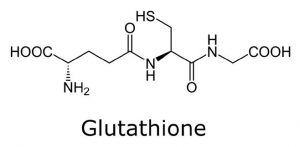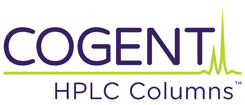LCMS Method without Derivatization
The major benefit of this analysis method for Glutathione which uses the Cogent Diamond Hydride Column and MS detection is that it is performed without derivatization, unlike other LCMS approaches. A GSH signal of MS is stable after repeated analyses. The unique design of the ESI offers efficient supersoft ionization which helps to preserve the structure of the analyte.
This Method ensures low variability of the results. After validation, it could be applied to routine analysis of oxidative stress in clinical samples (blood or plasma).

 Peak:
Peak:
Glutathione 308 m/z
Method Conditions
Column: Cogent Diamond Hydride 2.o™, 2.2μm, 120Å
Catalog No.: 70200-05P-2
Dimensions: 2.1 x 50mm
Mobile Phase:
—A: DI Water / 0.1% Formic Acid (v/v)
—B: Acetonitrile / 0.1% Formic Acid (v/v)
Gradient:
| Time (minutes) | %B |
| 0 | 85 |
| 2 | 30 |
| 4 | 30 |
| 5 | 85 |
Post Time: 3 minutes
Flow rate: 0.3 mL/minute
Detection: ESI – POS – PerkinElmer Flexar SQ 300 Mass Spectrometer
Injection vol.: 1μL
Sample Preparation: 1 ppm of Glutathione in 50% Acetonitrile / 50% DI Water / 0.1% Formic Acid
t0: 0.7 minutes
Note: Glutathione (GSH, Gamma-L-Glutamyl- L-Cysteinyl-Glycine) is a non-protein Thiol compound which plays an important role in protecting calls against oxidative stress. Lower levels of Glutathione were found in different diseases, like cardiovascular disease, cancers, and aging [3,3]. Under oxidative stress, GSH is converted into its oxidized form Glutathione Disulfide (GSSG). A lower level of GSH is an early indicator of disease risk.
Attachment
No 279 Glutathione pdf 0.2 Mb Download File


